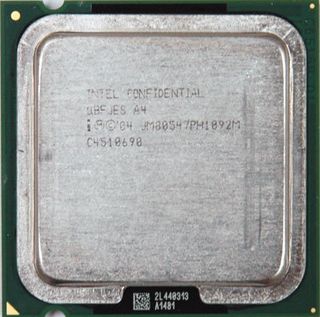Should You Be Looking For A Hard Drive Upgrade?
The Test System: Pentium 4 660 On Asus' P5GDC-V
Intel’s Pentium brand still exists, but it is by no means comparable to what the Pentium family looked like back in 2005.

While today’s dual-core Pentium processors are all based on Intel’s Core micro-architecture, the Pentium D and Pentium 4 still utilized Intel’s high-clock rate, low-efficiency NetBurst architecture. If you still find Pentium processors with three digit model numbers, then you’re dealing with one of those outdated hotties (of course, we mean “hotties” literally: the Pentium 4 500 was the first 90 nm Pentium 4 with 1 MB L2 cache for Socket 775; the 600 series was the 2 MB cache model). The Pentium D 800 was the first dual-core solution, and the Pentium D 900 moved those two cores from 90nm to 65nm. You can read just how bad the situation was in the article “The P4 560’s Heat Can Crash and Kill.”

We selected a Pentium 4 660, which has 2 MB cache and was manufactured on an improved 90nm process. The 3.6 GHz processor delivered high performance at the expense of fierce power consumption back in 2005. It was Intel’s top offering until the introduction of the Pentium D dual-core lineup later that year, and the replacement of the Pentium 4/D family by the Core 2 Duo by the middle of 2006.
We looked around at some older motherboards we have in the test lab and found a nice, fully-featured representative from 2005: the Asus P5GDC-V. It is based on Intel’s integrated 915G chipset, which was the first-generation DirectX 9 platform with PCI Express. The board has a x16 PCIe slot, but relies on integrated GMA900 graphics. This board supports both DDR-400 and DDR2 memory at speeds up to 711 MHz (overclocked). However, it supports one memory type or the other, not both simultaneously.

Stay on the Cutting Edge
Join the experts who read Tom's Hardware for the inside track on enthusiast PC tech news — and have for over 25 years. We'll send breaking news and in-depth reviews of CPUs, GPUs, AI, maker hardware and more straight to your inbox.
Current page: The Test System: Pentium 4 660 On Asus' P5GDC-V
Prev Page A Hard Drive Upgrade: Is Now The Time? Next Page Hard Drives: Samsung P120 And F2 EcoGreen